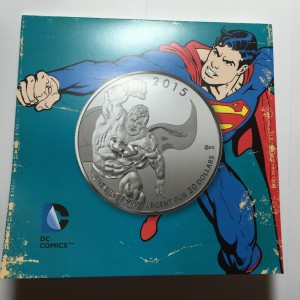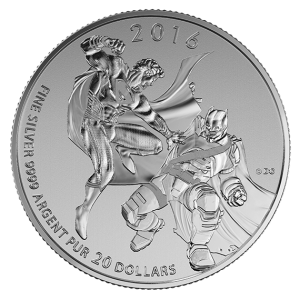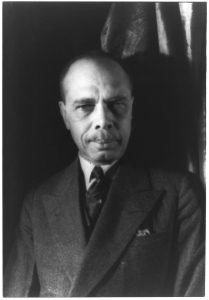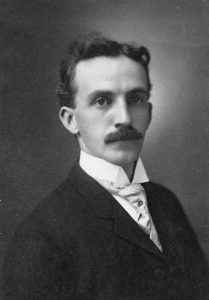Two 2024 Commemorative Bills Pass the House
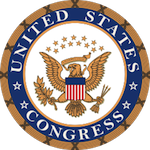 As part of the congressional charade of staying in session to prevent the appearance of adjournment, the House of Representatives cycled through some non-controversial legislation that included two that would authorize two 2024 commemorative coin programs.
As part of the congressional charade of staying in session to prevent the appearance of adjournment, the House of Representatives cycled through some non-controversial legislation that included two that would authorize two 2024 commemorative coin programs.
National World War II Memorial Commemorative Coin Act (H.R. 1057) was introduced last year by Rep. Marcy Kaptur (D-OH) to create a 2024 commemorative coin to raise money to care for the memorial.
If passed, the commemorative set will include a $5 gold coin, silver dollar, and clad half-dollar. The bill sets mintage limits are 50,000 gold coins, 400,000 silver dollars, and 750,000 clad half-dollars. The bill sets surcharges at $35 for each of the $5 gold coins sold, $10 for each silver dollar, and $5 for each clad half-dollar.
If the program sells out, the Friends of the National World War II Memorial will receive $9.5 million for maintenance and educational purposes.
H.R. 1057: National World War II Memorial Commemorative Coin Act
Harriet Tubman Bicentennial Commemorative Coin Act (H.R. 1842) was introduced last year by Rep. Gregory Meeks (D-NY) to create a 2024 commemorative coin to raise money to support museums remembering the legacy of Harriet Tubman.
The National Underground Railroad Freedom Center in Cincinnati, Ohio, and The Harriet Tubman Home, Inc. in Auburn, New York.
If passed, the commemorative set will include a $5 gold coin, silver dollar, and clad half-dollar. The bill sets mintage limits are 50,000 gold coins, 400,000 silver dollars, and 750,000 clad half-dollars. The bill sets surcharges at $35 for each of the $5 gold coins sold, $10 for each silver dollar, and $5 for each clad half-dollar.
If the program sells out, the National Underground Railroad Freedom Center in Cincinnati, Ohio, and The Harriet Tubman Home, Inc. in Auburn, New York, will receive $9.5 million ($4.625 million each) for maintenance and educational purposes.
H.R. 1842: Harriet Tubman Bicentennial Commemorative Coin Act
It’s Free Comic Book Day!
Free Comic Book Day is more than an effort to get people into the stores to buy comics. The publisher will take the opportunity to tweak a story, start a new story arc, or introduce new characters. They spend a few pages in the free comic book to enhance their stories or introduce new characters. The free comic book may also have an existing story that can summarize the story to convince readers to start reading the series.
Free Comic Book Day is more than a giveaway day. It is a marketing tool for the story writers to interact with the readers and get them attracted to the stories. The publishers and store owners use the giveaway to keep current customers interested and lure in new customers.
Although the publishers will introduce many new stories and characters, almost 90-percent will not last more than a few issues. The publishers know this and are willing to try whatever it takes to ensure that the readers come back for more. Once the readers are hooked, the publishers extend the brand into movies and other collectibles where collectors can purchase the merchandise anywhere.
The comic book industry accomplishes more in one day than the numismatic industry accomplishes in one week. Considering how ubiquitous money is in society, It is any wonder that we can raise new collectors.
Giving away coins may be seen as a good thing, but what does it mean to the collector? Why should the collector care about that Indian Head Cent or Buffalo Nickel? Dealers may think that the Women on Quarters, Innovation Dollars, or Native American Dollars are not as sexy as a Top-50 VAM. Still, I guarantee that the kid off the street would find the 2022 Vermont dollar more interesting than a 1921 Morgan Dollar.There is nothing wrong with comics and the comics culture. Comics readers love their characters, especially the superheroes, that they extend their buying beyond the comic book. Why not invite them into your shop to add comic book character coins to their collection.
You may not find coins with Superman, Batman, Captain America, or Spider-man exciting coins, but they are legal tender coins made of silver or gold that excite this crowd. Contact the publishers and see if you can source material to supplement the coins. It could create a partnership that could benefit both collectibles.
It might not be selling rare proof-like Morgans, but it will get people in your shop to look at your other inventory. Maybe they will see the Buffalo nickels and think those Type 1 coins are so cool that they might start a collection.
I have an idea… on Free Comic Book Day, the numismatic community can work with Marvel and DC to create a brass token that would be available to the collecting public. Some to the coin store, get the token for free. Let the publishers work on tokens and medals associated with their comics and sell them through coin stores. Then the coin stores can contact the New Zealand Mint or the Royal Canadian Mint to purchase a supply of comic book character coins and join the fun.
Sally Ride Has Landed
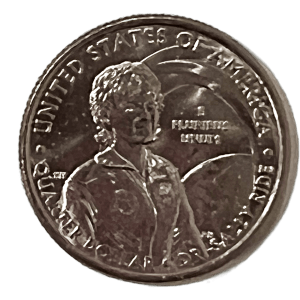 The current quarter in the American Women Quarters Program honors Dr. Sally Ride. These coins are showing up in change in an increasing number, with several landing in my pocket this week.
The current quarter in the American Women Quarters Program honors Dr. Sally Ride. These coins are showing up in change in an increasing number, with several landing in my pocket this week.
Dr. Ride was a physicist, astronaut, educator, and the first American woman to rocket into space aboard the Space Shuttle Challenger in 1983. At 32, Ride was also the youngest American in space.
On STS-41G in 1984, also on the Challenger, Ride was joined by Dr. Kathryn Sullivan, a geologist, making it the first space mission with two female crew members.
Following her retirement from NASA, Ride and Tam O’Shaughnessy teamed up to write science books for young people. They also started an educational company to inspire young people, especially girls, in science, technology, engineering, and math (STEM).
Ride received many honors during her life, including induction into the Astronaut Hall of Fame, National Women’s Hall of Fame, and Aviation Hall of Fame.
The reserve depicts Dr. Sally Ride next to a window on the space shuttle. It was designed by Elana Hagler of the Artistic Infusion Program and sculpted by U.S. Mint Medallic Artist Phebe Hemphill.
Numismatic Legislation Update
James Weldon Johnson was a writer and civil rights activist who was a leader of the NAACP. In 1920, Johnson was chosen as the first African-American executive secretary of the NAACP, effectively becoming its chief operating officer.
Johnson was known for his writing about black culture during the Harlem Renaissance. His work includes the lyrics for “Lift Every Voice and Sing,” which later became known as the Negro National Anthem. The music was written by his younger brother, J. Rosamond Johnson.
Johnson’s other accomplishments include his appointment as the U.S. consul in Venezuela and Nicaragua by Theodore Roosevelt, the first African-American professor hired by New York University, and later became a professor at Fisk University.
If this bill becomes law, 85-percent of the surcharges will be divided equally between the Marshall-Motley Scholars Program, the Stanton College Preparatory School, and the National Association for the Advancement of Colored People (NAACP). The rest of the money will be given to the James Weldon Johnson Foundation.
H.R. 7469: James Weldon Johnson Commemorative Coin Act
ANA Board Continues to Play Games
In early 2021, the Board voted to remove Faran Zerbe’s name from the award based on unproven accusations. Based on the Board’s statement, they accused Zerbe of “hucksterism and fraud” for a collectible created in 1904 for the Louisiana Purchase Expo. However, contemporary accounts do not support this accusation, and Zerbe went on to serve as head numismatist for the expositions in 1905 (Portland) and 1915 (San Francisco).
The Board also accused Zerbe of “unscrupulously obtained personal ownership of The Numismatist in 1908 from relatives of the ANA’s late founder, Dr. George F. Heath.” Their statement even said it was an “allegation” and has never provided documentation to confirm their allegations.
It is difficult to argue against creating an award for Chet Krause, and his work and dedication to the ANA and the hobby deserve an honor. But honoring Krause should NOT diminish the contribution of Zerbe, and the ANA should have created a separate award or renamed the award the Zerbe-Krause Distinguished Service Award.
Instead of joining the politically correct “woke” crowd, the ANA Board of Governors should be working on ways to expand the association’s reach and impact. There is so much the Board can do to better the ANA than play these games.
Weekly World Numismatic News for May 1, 2022
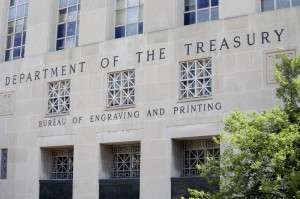 The Bureau of Engraving and Printing announced that they negotiated a transfer of land from the U.S. Department of Agriculture to build a new facility in the Maryland suburbs of Washington, D.C.
The Bureau of Engraving and Printing announced that they negotiated a transfer of land from the U.S. Department of Agriculture to build a new facility in the Maryland suburbs of Washington, D.C.
The USDA will transfer the 104-acre Beltsville Agricultural Research Center northwest of the Capital Beltway for the new printing facility. The BEP plans to begin construction in 2023 and complete the facility by 2027. The new printing facility will employ at least 850 people.
The BEP used to be the security printer for the United States government. The BEP printed security documents, including bonds and deed certificates, and stamps, other than printing currency.
Legally, the primary mission of the BEP is to print currency for the Federal Reserve. They would offer other printing services as long as they continued to supply the Fed with currency. Beginning in the 1970s, the BEP reduced the number of stamps they printed until ending stamp printing in the early 1990s. When the Treasury ended the Series E savings bond program, they contracted printing to other contractors.
The economic expansion of the 1980s led the BEP to end almost all security printing to print currency. Before opening the Fort Worth printing center in 1991, Treasury officials explored using commercial printers to supplement the BEP’s capabilities.
In 2022, the Federal Reserve ordered the printing of over 6.9 billion notes. Although this is less than last year’s order, the BEP is approaching its maximum capacity between the Washington and Fort Worth sites. And even though bonds and stamps have become electronic assets, the U.S. government still has a security printing requirement. Although a source at the BEP would not elaborate on the printing requirement, they said that government officials want to make security printing a government function.
And now the news…
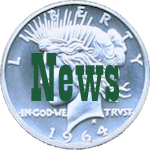 → Read more at nbcwashington.com
→ Read more at nbcwashington.com
 → Read more at the-sun.com
→ Read more at the-sun.com
